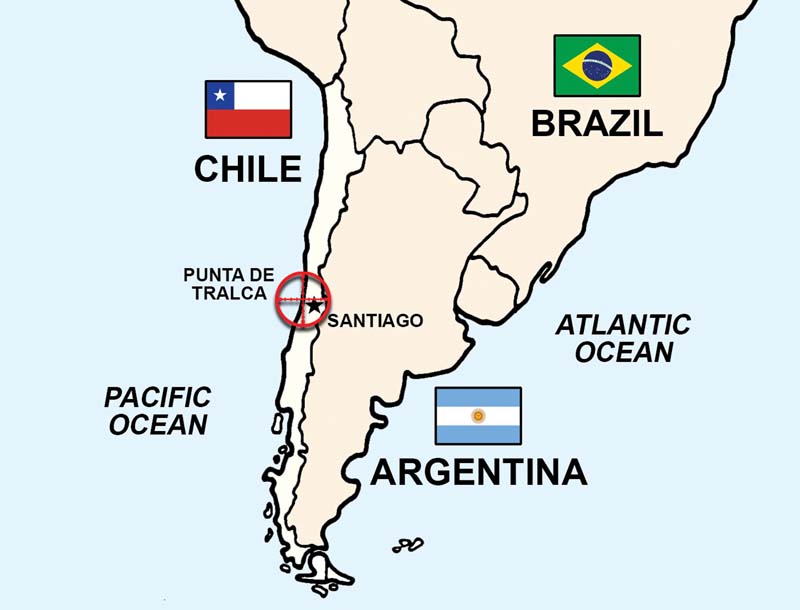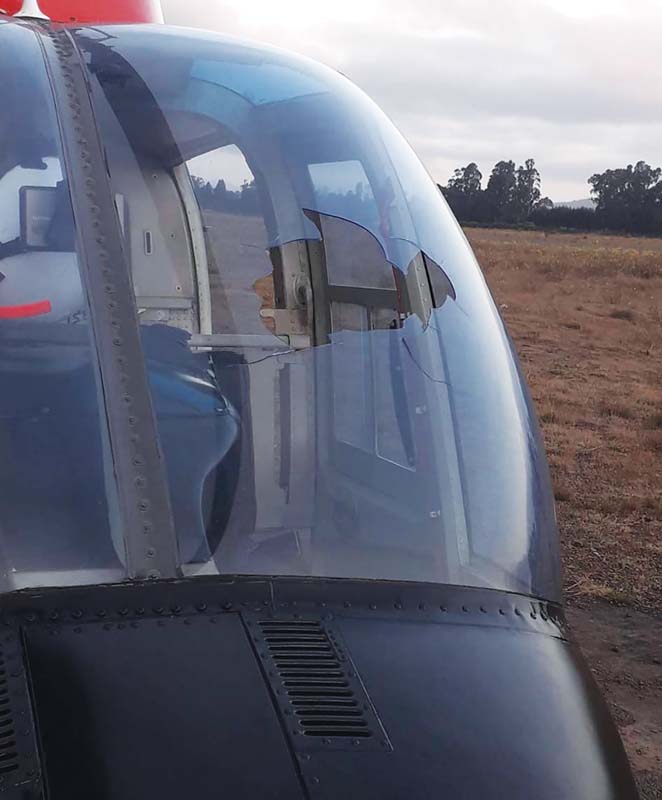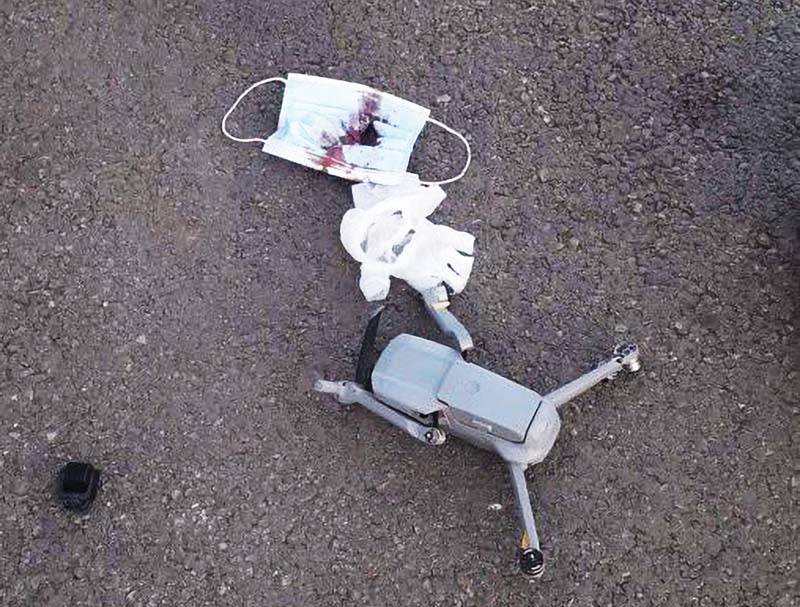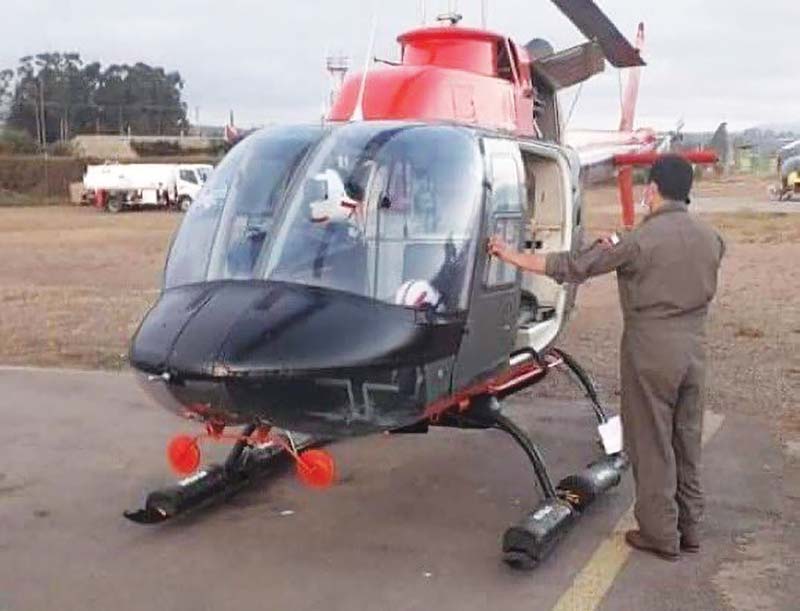It isn’t all aerial imaging and crop surveys; sometimes, people use drones to do bad things. Through a partnership with DroneSec—a private drone security intelligence firm with offices in Australia and Singapore—RotorDrone Pro is able to offer these briefings regarding the nefarious use of small UAS worldwide.
A Bad Day at the Beach
Incident Type: Mid-Air Collision
Incident Location: Punta de Tralca, Chile
Aircraft Type: DJI Mavic 2 Pro
Incident Resolution: Crew injured but safely landed aircraft, drone seized
No one is more forceful than me in advocating for the safe use of drones. We must always make safety our highest priority, and avoiding potential conflicts with crewed aircraft must be a paramount concern within that overall goal.

Punta de Tralca is a popular seaside resort town with a sandy beach, less than two hours from Santiago, Chile’s capital and largest city. In January 2021, a Chilean Navy helicopter conducting a shore patrol mission was struck by a small drone while flying over the area, injuring one of its crew members. (Photo courtesy Gurkah Lodiak)
That said, I’ve always been skeptical of the notion that a small uncrewed aircraft system (sUAS) could bring down a crewed aircraft. After all, they are designed to sustain bird strike and continue flying safely. According to 14 CFR 29.631, a helicopter should be able to take a direct hit from a 2-pound bird—such as a duck or a pigeon—while flying at cruising speed and, at a minimum, be able to effect a safe landing. That’s about the same weight as a Mavic 2.
Furthermore, several real-world incidents over the past few years have seemed to support my belief. In September 2017, an Army Black Hawk helicopter collided with a DJI Phantom in New York City. Immediately following the impact, the crew only reported that they had hit “something” and did not declare an emergency. It was only after they landed as a precautionary measure and inspected the aircraft that they discovered the shattered remnants of the drone. The resulting minor damage was quickly repaired, and the aircraft returned to service. Following an investigation, serial numbers on the recovered parts revealed the identity of the drone pilot.

The collision between a navy UH-57B helicopter and a DJI Mavic 2 Pro drone occurred over Punta de Tralca, a seashore community about 70 miles west of the nation’s capital of Santiago.

When it struck the UH-57B helicopter flying above Punta de Tralca, the DJI Mavic 2 Pro punched through the wind screen and hit the flight engineer in the face, inflicting what was described as a “moderate” injury.
Then, in September 2020, a DJI Mavic collided with a Los Angeles Police Department helicopter flying at low altitude while supporting officers on the ground searching for a burglary suspect. The UAS struck the underside of the helicopter, damaging antennas, its nose and its engine cowling, but there was no imminent threat to flight safety. The crew made an emergency landing and officers on the ground retrieved pieces of the drone, leading to the arrest of the drone pilot.
Given my confidence, I was honestly shaken by a case that DroneSec highlighted earlier this year, and especially the chilling images that accompanied it. As a community and an industry, we came within a foot or two of having our first deadly mid-air collision between a UAS and a crewed aircraft. If you have ever shared my doubts, it’s time to jettison them immediately.
On January 23, 2021, a UH-57B belonging to the Chilean Navy was flying a coastal patrol over Punta de Tralca, a seaside resort town an hour and a half west of the nation’s capital, Santiago. The aircraft is the military variant of the Bell 206, known as the “JetRanger,” which is also the basis for the Army’s OH-58 Kiowa reconnaissance helicopter. A base unit costs $1.4 million and seats five, including the crew. In short, this is not a flimsy flying machine. Armed versions of the Bell 206 have flown in conflicts from Vietnam to Afghanistan and Iraq, and more than 300 remain in service with the active-duty US military today.
While on patrol, the Chilean UH-57B struck a DJI Mavic 2 Pro. Its altitude at the time of the collision is unknown, but given the mission profile, it is plausible that the helicopter was flying below 1,000 feet. The drone punched through the wind screen at the left-front of the aircraft and, based on the available evidence, struck the occupant of the seat behind it in the face.
Fortunately, on this model of helicopter, the pilot sits in the right-front seat. It was the flight engineer who suffered an injury as a result. After successfully completing an emergency landing, the crewman was assessed to have sustained moderate injuries. He received initial treatment at CESFAM in Santo Domingo before being transferred to Viña del Mar Naval Hospital, where he was expected to make a full recovery.
DroneSec theorizes that the Mavic was able to pierce the helicopter’s wind screen because, although it is about the same weight as a bird that should be deflected without causing significant damage, it is denser and more rigid than an obstacle made of flesh and feathers.
One detail about this incident has really stayed with me: a photograph showing the wreckage of the drone along with a bloody, ripped face mask. It’s not difficult to image the crew were wearing masks owing to the COVID-19 epidemic and the Mavic hitting the flight engineer in the mouth. Just an inch or two higher and he could easily have been blinded. A couple of feet to the right, and it could have been the pilot who was blinded, with deadly results.
Under any circumstances, my fellow UAS pilots, I would have strenuously urged you to always keep your drone in sight and give plenty of space to crewed aircraft operating in the vicinity. However, now we know the danger is more than theoretical: being careless or reckless has the very real potential to injure or kill our brothers and sisters who operate their flying machines from the inside and that is something that we must never, ever allow to happen.

Seen here along with a face mask bloodied when it struck the flight engineer is the DJI Mavic 2 Pro that collided with a helicopter belonging to the Chilean Navy in January.

A member of the Chilean armed forces inspects the UH-57B helicopter damaged when it struck a small uncrewed aircraft system (UAS) while conducting a shore patrol mission over Punta de Tralca.
BY PATRICK SHERMAN



















